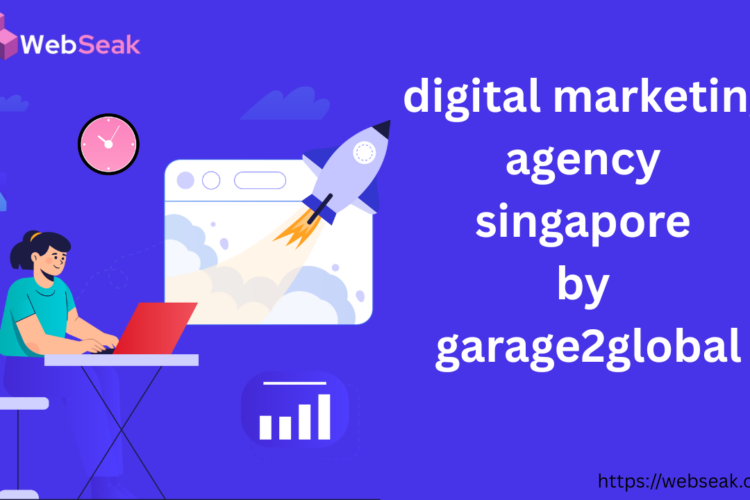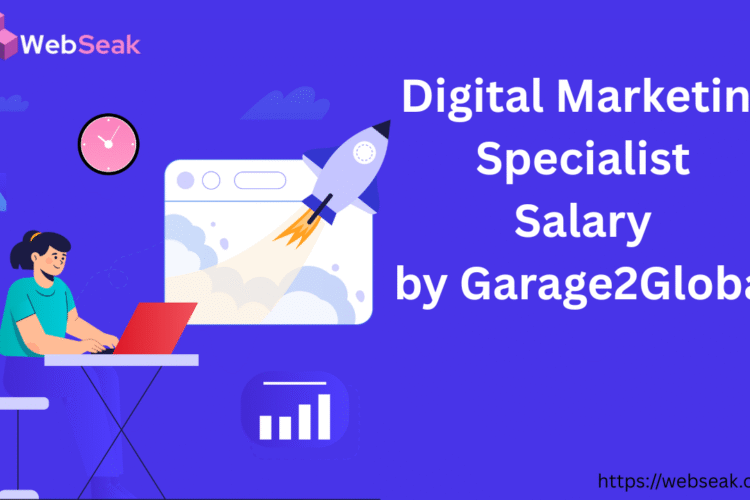
Introduction
Digital marketing insights are the valuable pieces of data and understanding that help businesses make smarter marketing decisions. At Webseak we believe that insights are the foundation of every successful marketing strategy. They come from analyzing customer behavior, campaign performance, and market trends to identify what truly drives engagement and conversions.
In today’s competitive online world, guessing is no longer an option. Businesses need actionable digital marketing insights to understand their audiences, refine their strategies, and stay ahead of the competition. In this article, we will explore what digital marketing insights are, why they matter, how to collect them, and how they help shape more effective marketing strategies.
Table of Contents
What Are Digital Marketing Insights ?
Digital marketing insights are conclusions drawn from analyzing data across various online marketing channels. They go beyond numbers—they reveal why something happens. For example, analytics might show that a campaign had a 10 percent click-through rate, but insights explain why that campaign performed better, whether it was the message, timing, or platform used.
These insights allow businesses to make informed decisions about what works and what doesn’t, helping them allocate budgets effectively and optimize campaigns for better performance.
Importance of Digital Marketing Insights
The importance of digital marketing insights lies in their ability to turn raw data into actionable knowledge. Without insights, businesses might continue to spend on strategies that do not deliver results.
Here’s why they are essential:
- Better Decision Making – Insights guide marketing teams to focus on strategies that deliver the best ROI.
- Understanding Consumer Behavior – They reveal what audiences want, when they want it, and how they interact online.
- Optimizing Campaigns – With the right insights, businesses can adjust their content, targeting, and channels to improve results.
- Predicting Trends – Insights help marketers anticipate shifts in behavior and stay ahead of competitors.
- Enhancing Customer Experience – Understanding customer preferences leads to more personalized and satisfying experiences.
Sources of Digital Marketing Insights
To gather valuable digital marketing insights, businesses rely on a variety of sources.
1. Website Analytics
Tools like Google Analytics provide data on traffic, bounce rates, user behavior, and conversion paths.
2. Social Media Metrics
Platforms like Facebook, Instagram, and LinkedIn offer detailed engagement statistics that show what kind of content performs best.
3. Email Campaign Data
Open rates, click rates, and subscriber activity reveal how audiences respond to email marketing.
4. Search Engine Data
SEO tools such as Google Search Console provide insights into keywords, rankings, and search trends.
5. Paid Advertising Reports
Ad platforms like Google Ads and Meta Ads Manager provide performance data for paid campaigns.
6. Customer Feedback and Reviews
Direct feedback from customers provides qualitative insights into satisfaction and expectations.
7. Market Research
Surveys, competitor analysis, and industry reports reveal broader market trends and opportunities.
Types of Digital Marketing Insights
There are several kinds of digital marketing insights businesses should pay attention to.
Behavioral Insights
These show how users interact with your content, website, or ads—what they click, how long they stay, and what motivates them.
Demographic Insights
These identify who your customers are, including their age, gender, location, and interests.
Channel Insights
These reveal which marketing channels—such as email, social media, or SEO—deliver the highest engagement and conversions.
Content Insights
These show which topics, formats, and styles resonate best with your audience.
Competitive Insights
These help businesses understand their position in the market compared to competitors.
How to Use Digital Marketing Insights ?
At Webseak, we recommend using digital marketing insights as a strategic tool rather than just raw data. Here’s how:
- Define Clear Goals
Start with objectives like increasing leads, improving engagement, or boosting conversions. - Collect the Right Data
Use analytics tools to gather information relevant to your goals. - Analyze and Interpret
Look for patterns and trends in the data to understand what drives performance. - Develop Actionable Strategies
Use these insights to adjust campaigns, messaging, and targeting. - Test and Refine
Implement changes, test outcomes, and continue refining your approach based on results. - Report and Share
Regularly communicate insights with your team to align efforts across departments.
Key Digital Marketing Insights in 2025
The digital marketing landscape continues to evolve, and current insights reveal some major trends shaping the industry.
Personalization Is Key
Consumers now expect customized experiences. Brands using data to personalize content and recommendations see higher engagement.
Video Dominates Engagement
Short-form videos on platforms like Instagram Reels, TikTok, and YouTube are outperforming other content types.
Voice Search Is Growing
As more users rely on voice assistants, optimizing content for voice search is becoming crucial.
Data Privacy Is a Priority
With new data protection laws, businesses must balance personalization with privacy and transparency.
AI and Automation Lead the Way
Artificial intelligence is being used for analytics, content creation, and customer service, helping marketers make faster decisions.
Benefits of Digital Marketing Insights
Using digital marketing insights delivers several measurable benefits:
- Increased ROI – Better targeting and messaging mean less wasted spending.
- Faster Growth – Insights help businesses identify opportunities early.
- Smarter Content Strategy – Data reveals what topics attract and convert audiences.
- Improved Customer Retention – Understanding customer behavior helps build long-term relationships.
- Competitive Advantage – Businesses using insights effectively outperform those relying on guesswork.
Tools for Gathering Digital Marketing Insights
To generate reliable digital marketing insights, marketers use several tools:
- Google Analytics for website and user data.
- SEMrush and Ahrefs for SEO and competitive insights.
- HubSpot for email, CRM, and lead tracking.
- Hootsuite and Sprout Social for social media analytics.
- Hotjar and Crazy Egg for visual behavior tracking through heatmaps.
- Google Data Studio for creating custom reports and dashboards.
Each tool helps transform data into meaningful insights that guide marketing strategies.
Challenges in Using Digital Marketing Insights
While insights are powerful, there are some challenges businesses often face:
- Data Overload – Too much information can make it hard to focus on what truly matters.
- Lack of Expertise – Interpreting data requires skill and understanding.
- Privacy Regulations – Compliance with laws like GDPR can limit data collection.
- Inconsistent Data – Poor tracking setup can lead to unreliable insights.
At Webseak, we recommend focusing on quality data, using reliable tools, and training teams to interpret results effectively.
Future of Digital Marketing Insights
The future of digital marketing insights will revolve around artificial intelligence, predictive analytics, and real-time data processing. Instead of just explaining what happened, future tools will forecast what will happen next.
Marketers will rely more on AI-driven insights to automate decision-making, predict trends, and personalize campaigns in real time. The businesses that harness these technologies early will have a clear competitive advantage.
Conclusion
Digital marketing insights are the key to creating smarter, more effective marketing strategies. They transform raw data into meaningful actions that improve performance, drive engagement, and grow businesses.
At Webseak we believe that success in digital marketing depends on understanding your audience, analyzing data, and using insights to make informed decisions. With the right tools, strategy, and expertise, businesses can turn every click, impression, and interaction into a measurable opportunity for growth.





